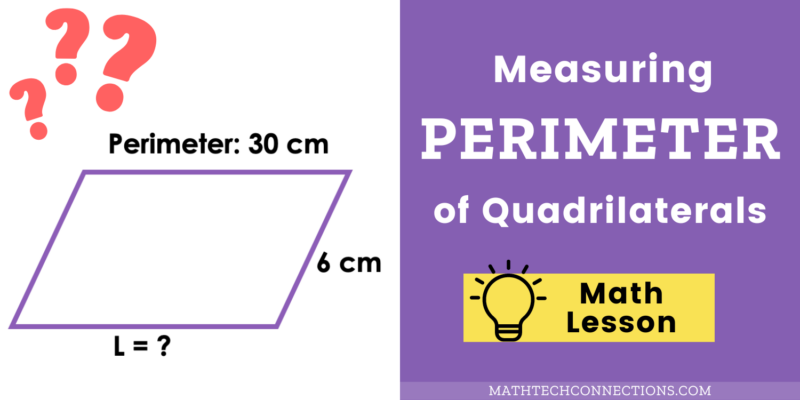
Objective: Students will practice finding perimeter and use their understanding of the 4 operations to answer questions about perimeter and missing side lengths.
Math Vocabulary: perimeter, quadrilateral, square, rectangle, parallelogram, rhombus, trapezoid, side, length, inch, feet, centimeter, meter, measure, ruler
Perimeter Warm up Question(s):
- How is measuring perimeter of quadrilaterals different from measuring the perimeter of triangles?
- How is measuring perimeter different from finding the length of an object?
There are 3 main categories of shapes:
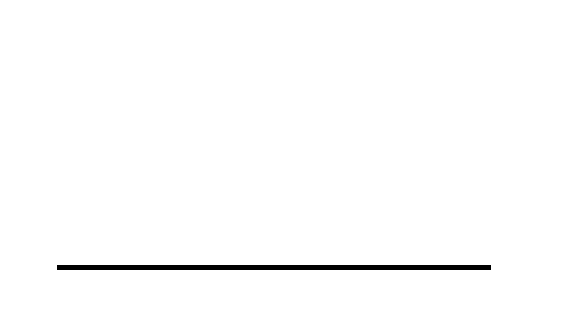
- 1 dimensional shapes have 1 measurable dimension such as length or height.
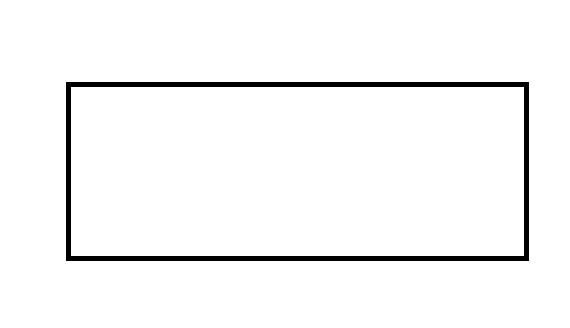
- 2 dimensional shapes have 2 measurable dimensions: length & width.
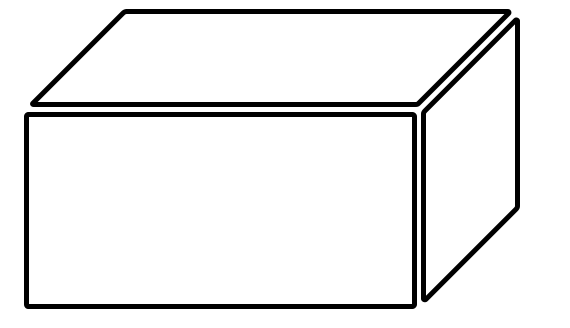
- 3 dimensional shapes have 3 measurable dimensions: length, width, & height.
The outside boundary of all 2 dimensional shapes is measurable. That measurement is called the perimeter.
Perimeter of Quadrilaterals
Quadrilaterals are 2 dimensional shapes with 4 sides.
That means the perimeter of quadrilaterals are the sum of 4 addends. The 4 addends are the side lengths.

If you traced the outside lines of each quadrilateral, you would have traced the perimeter of the shape.
Perimeter of Squares
Squares are special quadrilaterals because they belong to every other category of quadrilaterals.
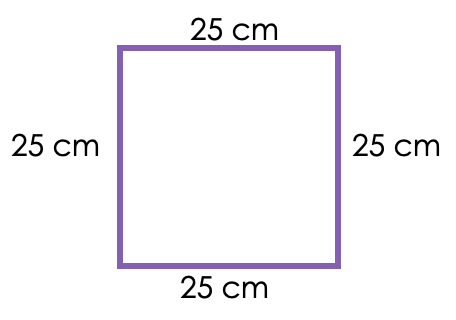
Squares always have 4 equal sides.
That means the perimeter of a square will be the sum of 4 equal side lengths.
25 cm + 25 cm + 25 cm + 25 cm = 100 cm
What is another way to find the total of 4 equal lengths?
I can multiply 25 x 4.
25 x 4 = P
We can have the letter P stand for the unknown in this problem, which is the perimeter.
25 x 4 = (20 x 4) + (5 x 4)
80 + 20 = 100
So P, or perimeter, equals 100 cm.
What is the perimeter of the square?
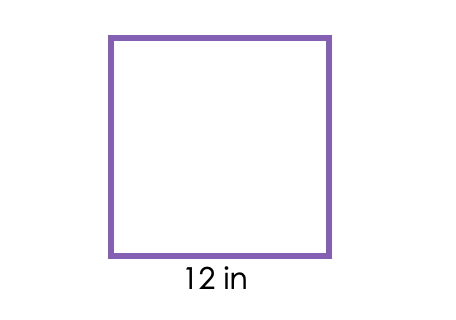
Always check your unit of measure!
This square is measured in inches.
The perimeter of the square is 48 inches.
We know each side of a square is the same length, so there are 4 sides that are each 12 inches long.
12 x 4 = P
48 = P
Perimeter of Rectangles
Rectangles are quadrilaterals with 4 right angles (square corners) and equal opposite sides.

What 4 addends will make up the perimeter of this rectangle?
6 ft, 6 ft, 24 ft, & 24 ft
Because rectangles have equal opposite sides, both shorter sides are 6 feet long and both longer sides are 24 feet long.
24 + 24 + 6 + 6 = P
60 = P
The perimeter of the rectangle is 60 feet.
What is the perimeter of the rectangle?
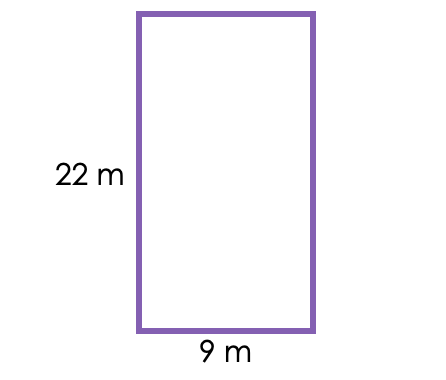
Always check your unit of measure!
This rectangle is measured in meters.
The perimeter of the rectangle is 62 meters.
- We know each side without a measurement is equal to its opposite side.
- There are 2 sides that are 9 meters long.
- There are 2 sides that are 22 meters long.
22 + 22 + 9 + 9 = P
62 = P
Perimeter of Trapezoids
You can find the perimeter of other quadrilaterals by adding the 4 side lengths together.
Ask yourself:
- What do I know about the side lengths?
- What do I know about the shape?
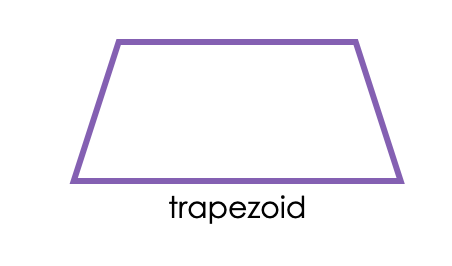
What do you know about the perimeter of this trapezoid?
There are 4 sides. 2 sides look equal. The top line is shorter than the bottom line.
- Trapezoids are quadrilaterals with at least one set of parallel sides.
- Squares and rectangles are trapezoids.
- This one only has 1 pair of parallel sides, so it is just a trapezoid.
- It looks like the opposite diagonal sides of this trapezoid are equal.
- If they are equal, the diagram or problem should tell you.
- The perimeter of this trapezoid is 6 + 6 + 10 + 18 inches, or 40 inches.
Find the perimeter of the trapezoid.
What is the perimeter of the trapezoid if the top and side lines are equal?
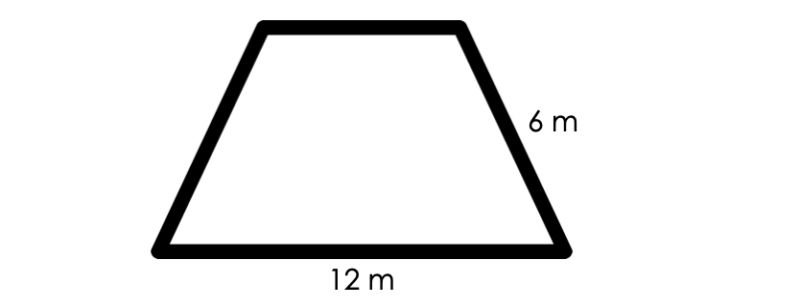
The perimeter of the trapezoid is 30 meters.
The top and sides of this trapezoid look equal, and the question tells us they are. To find the perimeter, we can add the side lengths.
6 + 6 + 6 + 12 = 30 m
We can also multiply and add.
3 x 6 + 12 = 18 + 12 = 30 m
Perimeter of Parallelograms
You can find the perimeter of quadrilaterals by adding the 4 side lengths together.
Ask yourself:
- What do I know about the side lengths?
- What do I know about the shape?
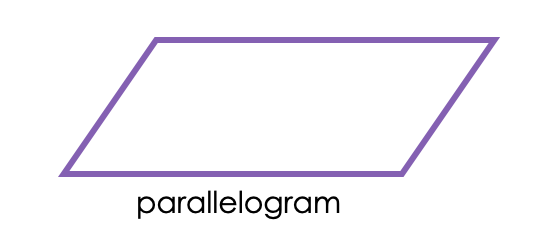
What do you know about the perimeter of this parallelogram?
Parallelograms have equal opposite sides.
Parallelograms have equal opposite sides like rectangles. That means if you know the length and width, you know the length of all 4 sides.
If this parallelogram were labeled with 10 cm & 7 cm, you would know there are 2 sides that are 7 cm long and 2 sides that are 10 cm long.
The perimeter would be 10 cm + 10 cm + 7 cm + 7 cm, or 34 cm.
Find the perimeter of the parallelogram.
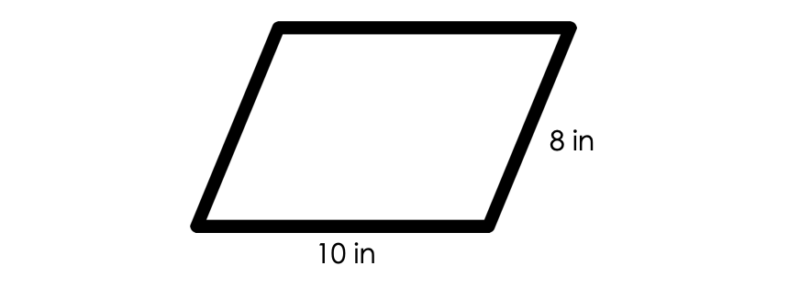
The perimeter of the parallelogram is 36 inches.
We know parallelograms have equal opposite sides.
8 in + 8 in + 10 in + 10 in = P
36 in = P
Review: Perimeter of Quadrilaterals
- Squares have 4 equal sides. Calculate the perimeter by adding the 4 equal side lengths or multiplying by 4.
- Rectangles & parallelograms have equal opposite sides. If you know the length & width, you know all 4 sides.
- Trapezoids might have 2 or 3 different side lengths. Pay attention to the diagram or the words in the question.
Find the missing side length using the perimeter.
You might be given a quadrilateral with a missing side length! You can find the missing side length using the perimeter. You will need to think critically about what you know about the shape.
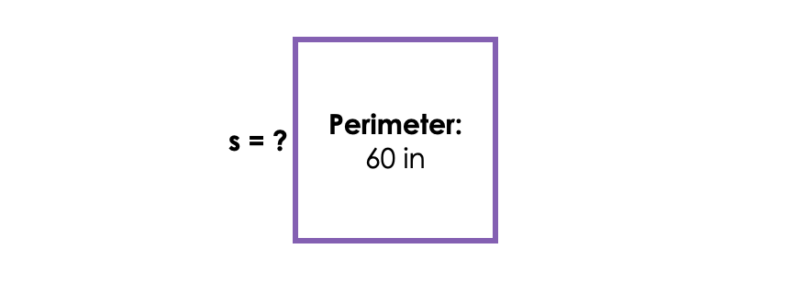
What do you know about squares that can help you find the side length with no other information?
Squares have 4 equal sides.
4 equal sides means we can divide by 4 to find the length of each side!
If we use the letter s for the unknown side length, the equation looks like this:
60 ÷ 4 = s
60 ÷ 4 = 15
s = 15 in
Since division can be solved as multiplication with an unknown factor, this equation is also correct:
4 x s = 60
4 x 15 = 60
s = 15 in
Find the missing length given the perimeter.
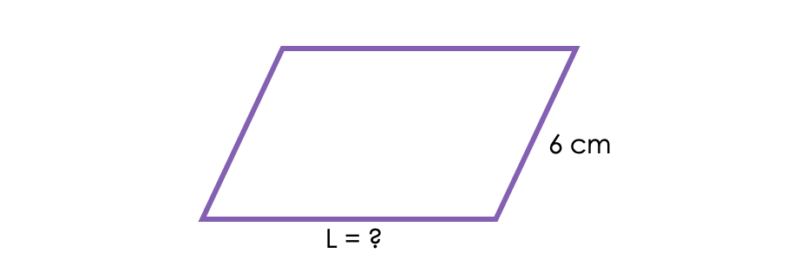
What do you know about parallelograms that can help you find the missing side length if the perimeter is 30 cm?
Parallelograms have equal opposite sides.
This problem is getting tricky! We know the 2 diagonal sides are each 6 cm. That is 12 cm of the 30 cm perimeter. But we are missing 2 sides!
6 cm + 6 cm + L cm + L cm = 30 cm
We can find the length of both missing sides by subtracting 12 cm from 30 cm: 30 – 12 = 18 cm.
-
- 18 cm is the length of BOTH unknown sides.
- 18 cm ÷ 2 = 9 cm
- Each of the longer sides is 9 cm long.
Math Error Analysis
What’s the mistake?
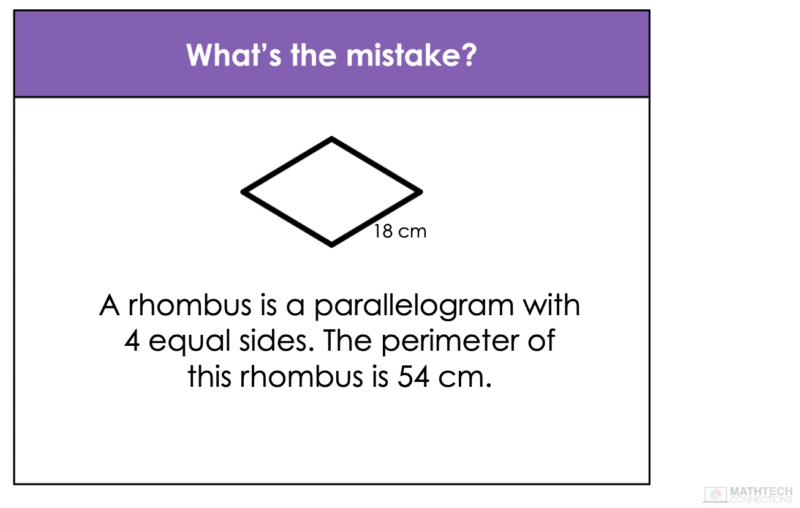
Rhombuses have 4 equal sides like squares. The perimeter can be found by multiplying 18 cm x 4 because each side is 18 cm long. BUT, 54 = 18 x 3, so a side is missing from the calculation.
18 x 4 = (10 x 4) + (8 x 4)
40 + 32 = P
72 = P
The perimeter of the rhombus is 72 cm.
Closing questions:
- What does each shape in this activity have in common?
- What attributes of quadrilaterals make it easier to find their side lengths or perimeter?
- When you subtract 2 known side lengths from the perimeter of a rectangle or parallelogram, what do you need to do with the difference to find the missing side length?
Resources to Teach Perimeter
The lesson from this blog post is part of our 3rd Grade Math Curriculum. Want more lessons like this one? Click here to view the editable mini-lessons.




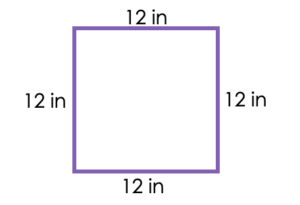


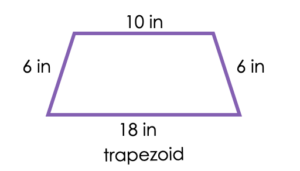
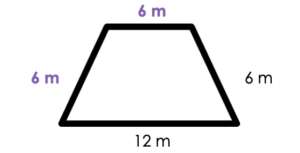

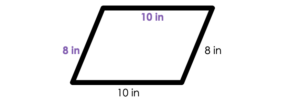
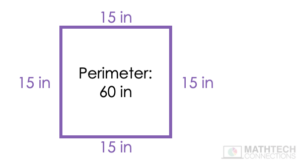
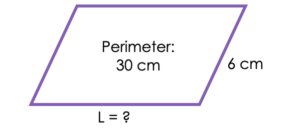

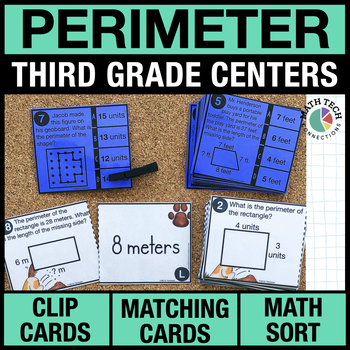



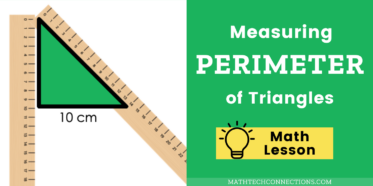







Awesome resources!
Hey! Do you have this in a paper copy?